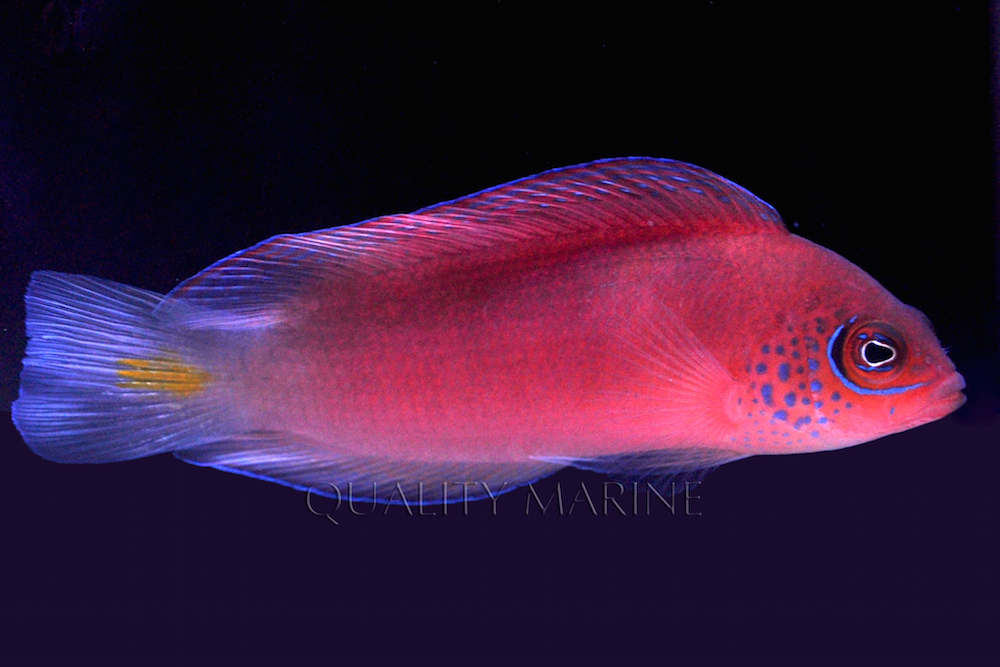Ogilbyina is a genus of dotty backs endemics to the Australian-Melanesian subregions of Oceania. The genus is easily diagnosed by having a triangular patch of teeth on their vomer, as well as having a more anteriorly placed dorsal fin. The dorsal and anal fins also produce a much higher ray count than Pseudochromis. The genus contains three species, all of which are rather robust and puerile. They are Ogilbyina queenslandiae, O. novaehollandiae and O. salvati.

The first two species are found exclusively on the eastern coast of Australia where they occupy a sympatric range over much of their distributions. O. queenslandiae reaches north to Cape York, while O. novaehollandiae reaches south to Brisbane. The lesser known O. salvati is found further east, straying into the peripheries of the Melanesian subregion. This species is endemic to New Caledonia, where it hardly gets any airtime in the aquarium trade.
The genus originally comprised of four species, but evidence suggesting that O. queenslandiae, O. novaehollandiae and O. salvati forming a sister group to the genus Labracinus subsequently led dottyback authority Dr. Anthony Gill in moving Ogilbyina veliferus to the genus Oxycerichthys in his 2004 revision. Ogilbyina now currently contains three species. The distribution map above shows the biogeography of both sister genera Labracinus and Ogilbyina.

The endemic and allopatric O. salvati from New Caledonia is the least frequently encountered member of this genus. The specific epithet “salvati” was coined in honour of french scientist Bernard Salvat. In this beautiful dotty back, the body is uniform magenta. The orbital circumference is edged on the outside in a metallic blue semicircle, and the peropercular and pectoral regions are freckled in blue of similar hue. In typical Ogilbyina fashion, the fins are grandiose and large, and in O. salvati, the dorsal fin is decorated on the outer edge in a pattern on horizontally lined spots. The caudal fin is variably colored from translucent white to solid yellow. This fish recalls a superficial phenotypic resemblance to Cypho.

Quality Marine secured a single specimen of this species from their exclusive short chain Melanesian supplier. Despite Ogilbyina‘s reputation for being bellicose and pugnacious, they report that the fish remains rather shy, preferring to hide in tubes. Still, it’s advisable not to house this fish with smaller, more passive species; especially if they are in the same genera or have the same body type.

A big thanks to Eli Fleishauer of Quality Marine for sharing this brilliant dotty back with us, and a big thanks to Dr. Anthony Gill for his insight into the species and its taxonomic affinity within labracinine.



